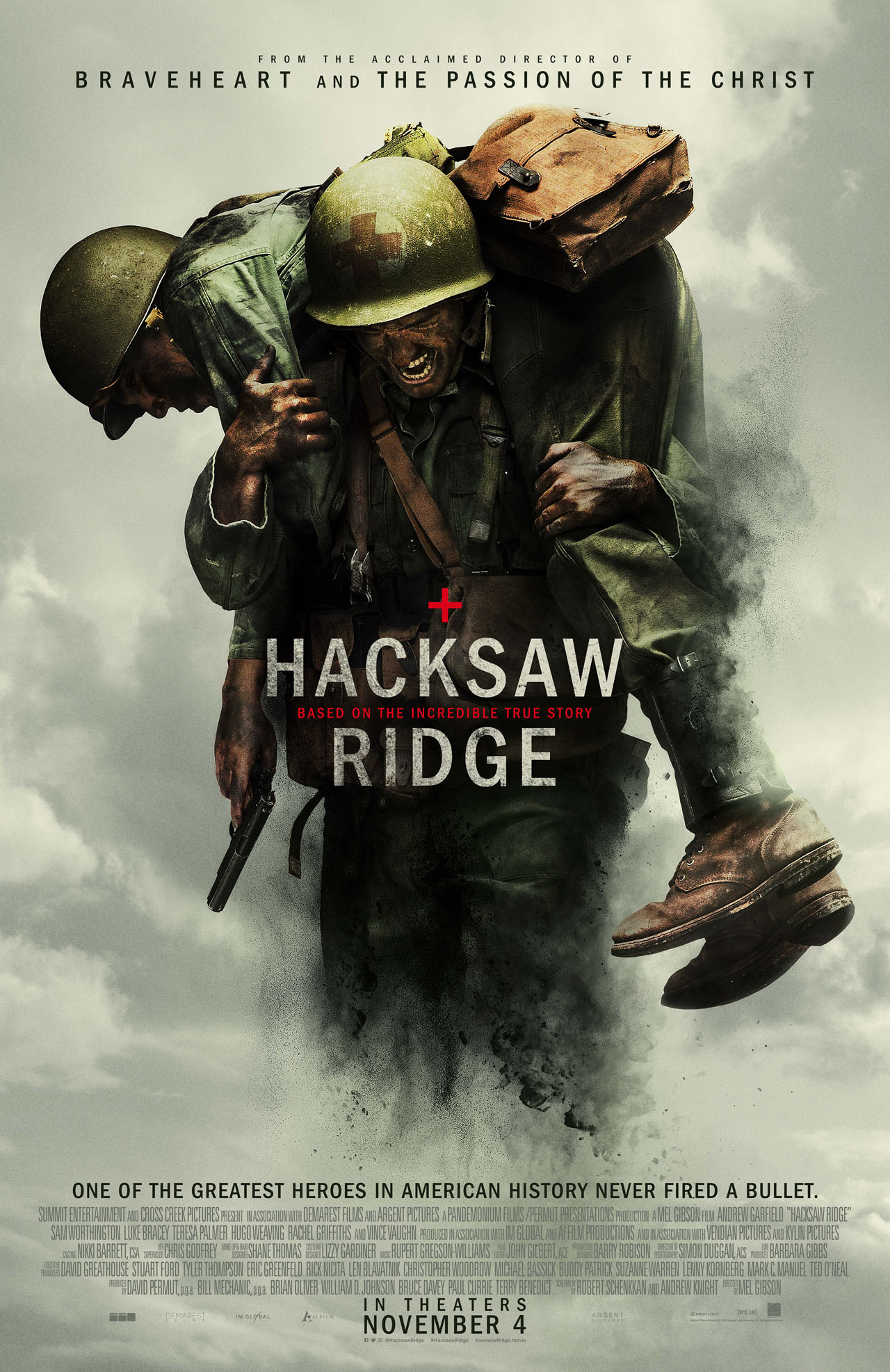After ten years as public enemy number one in Hollywood (and well-deserved…but we’ll just leave it at that) Mel Gibson is back. And let’s not think for a second it’s a coincidence that the film he picked for his return to the director’s chair is about forgiveness, redemption, and atonement. Hacksaw Ridge is based on the true story of World War II Private First Class Desmond Doss, the first conscientious objector to be awarded the Congressional Medal of Honor.
A spindly young man from the Blue Ridge Mountains of Virginia, Doss (Andrew Garfield) grows up under the cracking whip (and belt) of his alcoholic father (Hugo Weaving). After accidentally almost killing his little brother one day in a playful scuffle and then years later having to protect his mother from his gun-wielding father’s abuse, Doss swears off violence, in accordance with his Seventh-Day Adventist upbringing.
Despite that, however, Doss is eager to serve his country in the war. While ideologically opposed to picking up a gun, he wants be be a medic─saving lives, as he says, while everyone else around him will be taking them. After falling in love with nurse Dorothy Schutte (Teresa Palmer), Doss heads off for basic training under the command of Sergeant Howell (Vince Vaughn) and Captain Glover (Sam Worthington). Neither, of course, is enamored with Doss’s refusal to pick up a weapon, mistaking his conviction for cowardice.
Doss is eventually brought up on a court martial but is cleared and allowed to head off to battle, unarmed, in the Pacific; his platoon will lead the charge up Hacksaw Ridge in Okinawa.
Following the same basic structure as Stanley Kubrick’s iconic Full Metal Jacket,Hacksaw Ridge is split in two─the first half is gentle exposition followed by intense boot camp, while the second shifts jarringly into all-out hellish war. It’s a strategy that worked superbly for Kubrick, and it works just as well for Gibson in Hacksaw Ridge.
Working from a script by Andrew Wright and The Pacific’s Robert Schenkkan, Gibson has crafted a masterpiece of a movie, on par not only with Full Metal Jacket but also Saving Private Ryan and his own Oscar-winning Braveheart. Hacksaw Ridge is bloody, raw, and terrifying, but it’s also moving and honest and real. For every minute that the horror of war is shown in as visceral (in the literal sense of the word) a manner as it has ever been shown, there are equal moments of pure, uplifting heroism. Hacksaw Ridge is gory without being gratuitous, spiritual without being preachy, and emotional without being cloying.
Garfield turns in what is easily his finest work, and he’s backed up by a supporting cast that offers up similar career-best performances, including Palmer, Vaughn, and Weaving. On the other side of the camera, huge kudos are due to editor John Gilbert, cinematographer Simon Duggan, and also to Rupert Gregson-Williams, whose score perfectly segues from melancholy to hysteria.
The real man behind the curtain, however, is Gibson himself, who has proven again and again that he is (or was, anyway) one of the best directors in the game. And again here, hIs ability to highlight humanity in the midst of (usually very bloody) chaos makes Hacksaw Ridge a living and breathing movie and one of the best of Gibson’s career.
Whether that career is fully viable again is anyone’s guess, but if it means more movies as spectacularly moving as Hacksaw Ridge, let’s hope so.
Rating
4.5/5 stars
